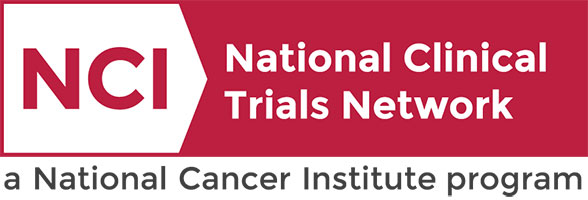Patient Search
 |
 |
|
KaCrole Higgins was diagnosed with breast cancer in 2020. “In May 2020, I found a lump in my breast. I cried. By June, it was diagnosed as breast cancer, triple positive, stage 1A. While getting this cancer diagnosis was devastating, it also became an opportunity. Suddenly, the cancer gave me clarity. It gave me clarity about what was important, what was good in my life, what was toxic in my life, and what I needed to do.” Click below to read more of KaCrole’s story |
If Landon Ryan had been diagnosed with bilateral retinoblastoma 10, 20 or 30 years ago, she might not be here today with nearly perfect vision.Thanks to recent improvements in the treatment for this rare form of cancer that almost exclusively affects children under the age of 5, the diagnosis had the power to change Landon’s life when she was 11 months old, but not to take it — or her eyesight. Click below to learn more about Landon and her story. https://momentum.vicc.org/2022/04/brighter-outlook/ |
A Study to Evaluate the Safety and Efficacy of Axatilimab in Combination With Ruxolitinib in Participants With Newly Diagnosed Chronic Graft-Versus-Host Disease
This study will be conducted to determine the preliminary efficacy of axatilimab in combination with ruxolitinib and to assess the contribution of axatilimab to the combination treatment effect in participants with cGVHD.
Not Available
II
Kitko, Carrie
NCT06388564
VICC-DTCTT24000
Targeted Therapy Directed by Genetic Testing in Treating Patients With Locally Advanced or Advanced Solid Tumors, The ComboMATCH Screening Trial
Multiple Cancer Types
This ComboMATCH patient screening trial is the gateway to a coordinated set of clinical trials to study cancer treatment directed by genetic testing. Patients with solid tumors that have spread to nearby tissue or lymph nodes (locally advanced) or have spread to other places in the body (advanced) and have progressed on at least one line of standard systemic therapy or have no standard treatment that has been shown to prolong overall survival may be candidates for these trials. Genetic tests look at the unique genetic material (genes) of patients' tumor cells. Patients with some genetic changes or abnormalities (mutations) may benefit from treatment that targets that particular genetic mutation. ComboMATCH is designed to match patients to a treatment that may work to control their tumor and may help doctors plan better treatment for patients with locally advanced or advanced solid tumors.
Breast,
Gastrointestinal,
Gynecologic,
Head/Neck,
Lung,
Melanoma,
Neuro-Oncology,
Sarcoma,
Urologic
II
Choe, Jennifer
NCT05564377
VICC-NTMDT23238
pBI-11 & TA-HPV (With Pembrolizumab as Treatment for Patients w/Advanced, PD-L1 CPS1, hrHPV+ Oropharyngeal Cancer
This phase II trial tests how well pB1-11 and human papillomavirus tumor antigen (TA-HPV) vaccines in combination with pembrolizumab work in treating patients with oropharyngeal cancer that has come back (recurrent) or that has spread from where it first started (primary site) to other places in the body (metastatic) and that is PD-L1 and human papillomavirus (HPV) positive. Oropharyngeal cancer is a type of head and neck cancer involving structures in the back of the throat (the oropharynx), such as the non-bony back roof of the mouth (soft palate), sides and back wall of the throat, tonsils, and back third of the tongue. Scientists have found that some strains or types of a virus called HPV can cause oropharyngeal cancer. pBI-11 is a circular deoxyribonucleic acid (DNA) (plasmid) vaccine that promotes antibody, cytotoxic T cell, and protective immune responses. TA-HPV is an investigational recombinant vaccina virus derived from a strain of the vaccina virus which was widely used for smallpox vaccination. Vaccination with this TA-HPV vaccine may stimulate the immune system to mount a cytotoxic T cell response against tumor cells positive for HPV, resulting in decreased tumor growth. Immunotherapy with monoclonal antibodies, such as pembrolizumab, may help the body's immune system attack the cancer, and may interfere with the ability of tumor cells to grow and spread by inhibiting the PD-1 receptor. These investigational vaccines could cause or enhance an immune response in the body against HPV, during which time the activity of pembrolizumab against oropharyngeal cancer associated with HPV may be strengthened. These drugs in combination may be more effective in increasing the ability of the immune system to fight oropharyngeal cancer than pembrolizumab alone.
Not Available
II
Not Available
NCT05799144
VICCHN2208
Targeted Treatment for Metastatic Prostate Cancer, The PREDICT Trial
This phase II trial evaluates whether genetic testing in prostate cancer is helpful in deciding which study treatment patients are assigned. Patient cancer tissue samples are obtained from a previous surgery or biopsy procedure and tested for deoxyribonucleic acid (DNA) and ribonucleic acid (RNA) abnormalities or mutations in their cancer. Valemetostat tosylate is in a class of medications called EZH1/EZH2 inhibitors. It blocks proteins called EZH1 and EZH2, which may help slow or stop the spread of tumor cells. Carboplatin is in a class of medications known as platinum-containing compounds. It works in a way similar to the anticancer drug cisplatin, but may be better tolerated than cisplatin. Carboplatin works by killing, stopping or slowing the growth of tumor cells. Cabazitaxel injection is in a class of medications called microtubule inhibitors. It works by slowing or stopping the growth of tumor cells. Abiraterone acetate blocks tissues from making androgens (male hormones), such as testosterone. This may cause the death of tumor cells that need androgens to grow. It is a type of anti-androgen. Enzalutamide is in a class of medications called androgen receptor inhibitors. It works by blocking the effects of androgen (a male reproductive hormone) to stop the growth and spread of tumor cells. Lutetium Lu 177 vipivotide tetraxetan is in a class of medications called radiopharmaceuticals. It works by targeting and delivering radiation directly to tumor cells which damages and kills these cells. Assigning patients to targeted treatment based on genetic testing may help shrink or slow the cancer from growing
Not Available
II
Schaffer, Kerry
NCT06632977
ALLUROA032102
Outpatient Administration of Teclistamab or Talquetamab for Multiple Myeloma
Multiple Myeloma
Multiple Myeloma
This is a phase II study to evaluate the outpatient administration of Teclistamab or Talquetamab in Multiple Myeloma patients
Multiple Myeloma
II
Baljevic, Muhamed
NCT05972135
VICCPCL24566
Testing What Happens When an Immunotherapy Drug (Pembrolizumab) is Given by Itself Compared to the Usual Treatment of Chemotherapy With Radiation After Surgery for Recurrent Head and Neck Squamous Cell Carcinoma
Head/Neck
Head/Neck
This phase II trial studies the effect of pembrolizumab alone compared to the usual approach (chemotherapy \[cisplatin and carboplatin\] plus radiation therapy) after surgery in treating patients with head and neck squamous cell carcinoma that has come back (recurrent) or patients with a second head and neck cancer that is not from metastasis (primary). Radiation therapy uses high energy radiation or protons to kill tumor cells and shrink tumors. Cisplatin is in a class of medications known as platinum-containing compounds. It works by killing, stopping or slowing the growth of cancer cells. Carboplatin is also in a class of medications known as platinum-containing compounds. It works in a way similar to the anticancer drug cisplatin, but may be better tolerated than cisplatin. Carboplatin works by killing, stopping or slowing the growth of cancer cells. Immunotherapy with monoclonal antibodies, such as pembrolizumab, may help the body's immune system attack the cancer and may interfere with the ability of tumor cells to grow and spread. Giving pembrolizumab alone after surgery may work better than the usual approach in shrinking recurrent or primary head and neck squamous cell carcinoma.
Head/Neck
II
Choe, Jennifer
NCT04671667
ECOGHNEA3191
DCIS: RECAST Trial Ductal Carcinoma In Situ: Re-Evaluating Conditions for Active Surveillance Suitability as Treatment
Breast
Breast
The goal of this trial is to see if active surveillance monitoring and hormonal therapy in patients diagnosed with ductal cell carcinoma in situ (DCIS), an early stage of breast cancer, can be an effective management of the disease.
Participants will be asked to receive control hormonal therapy or an investigational hormonal therapy treatment. Participants will be asked to return for evaluation with MRI at three months and six months. Depending on the evaluation participants will have the option to continue on the treatment. If the evaluation suggests surgery is recommended, the participant will discontinue the study treatment and will undergo surgery. In addition to the treatment and MRI evaluation, participants will be asked to provide blood sample to understand their immune status, provide saliva sample for genetic testing, provide the study with a portion of the tissue or slides generated from tissue removed during surgery performed as part of their standard of care.
Participants will be asked to receive control hormonal therapy or an investigational hormonal therapy treatment. Participants will be asked to return for evaluation with MRI at three months and six months. Depending on the evaluation participants will have the option to continue on the treatment. If the evaluation suggests surgery is recommended, the participant will discontinue the study treatment and will undergo surgery. In addition to the treatment and MRI evaluation, participants will be asked to provide blood sample to understand their immune status, provide saliva sample for genetic testing, provide the study with a portion of the tissue or slides generated from tissue removed during surgery performed as part of their standard of care.
Breast
II
Meszoely, Ingrid
NCT06075953
VICC-DTBRE23082
Cabozantinib for Patients With Recurrent or Progressive Meningioma
Neuro-Oncology
Neuro-Oncology
A Phase II Study of Cabozantinib for Patients with Recurrent or Progressive Meningioma
Neuro-Oncology
II
Mohler, Alexander
NCT05425004
VICC-ITNEU23261
Testing the Use of AMG 510 (Sotorasib) and Panitumumab as a Targeted Treatment for KRAS G12C Mutant Solid Tumor Cancers (A ComboMATCH Treatment Trial)
This phase II ComboMATCH treatment trial tests how well AMG 510 (sotorasib) with or without panitumumab works in treating patients with KRAS G12C mutant solid tumors that may have spread from where it first started to nearby tissue, lymph nodes, or distant parts of the body (advanced). Sotorasib is in a class of medications called KRAS inhibitors. It works by blocking the action of the abnormal protein that signals cancer cells to multiply. This helps stop or slow the spread of cancer cells. Panitumumab is in a class of medications called monoclonal antibodies. It works by slowing or stopping the growth of cancer cells. Giving combination panitumumab and sotorasib may kill more tumor cells in patients with advanced solid tumors with KRAS G12C mutation.
Not Available
II
Choe, Jennifer
NCT05638295
ECOGMDEAY191-E5
A Randomized Study of ASTX727 With or Without Iadademstat in Advanced Myeloproliferative Neoplasms (MPNs)
Leukemia
Leukemia
This phase II trial compares the effect of ASTX727 in combination with iadademstat to ASTX727 alone in treating patients with accelerated or blast phase Philadelphia chromosome negative myeloproliferative neoplasms (MPNs). ASTX727 is a combination of two drugs, cedazuridine and decitabine. Cedazuridine is in a class of medications called cytidine deaminase inhibitors. It prevents the breakdown of decitabine, making it more available in the body so that decitabine will have a greater effect. Decitabine is in a class of medications called hypomethylation agents. It works by helping the bone marrow produce normal blood cells and by killing abnormal cells in the bone marrow. Iadademstat may stop the growth of tumor cells by blocking some of the enzymes needed for cell growth. Giving ASTX727 in combination with iadademstat may be more effective than ASTX727 alone in treating patients with accelerated or blast phase Philadelphia chromosome negative MPNs.
Leukemia
II
Kishtagari, Ashwin
NCT06661915
ETCHEM10675


